So what happened to the ‘celtic tiger!’
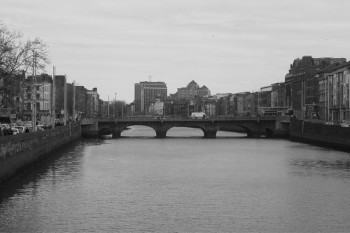 River LiffeyThe name Dublin comes from the Gaelic dubh linn or “black pool” - where the Poddle stream met the River Liffey to form a deep pool at Dublin Castle. The city's modern name - Baile Áth Cliath – means the “town of the ford of the hurdles”. Ireland's four principal routeways converged at a crossing place made of hurdles of interwoven saplings straddling the low-tide Liffey.
River LiffeyThe name Dublin comes from the Gaelic dubh linn or “black pool” - where the Poddle stream met the River Liffey to form a deep pool at Dublin Castle. The city's modern name - Baile Áth Cliath – means the “town of the ford of the hurdles”. Ireland's four principal routeways converged at a crossing place made of hurdles of interwoven saplings straddling the low-tide Liffey.
837 AD – 917 AD:
In 837, sixty Viking longships attacked churches round the Poddle and Liffey estuary, and the invaders made a permanent settlement in 841.
917 – 1014:
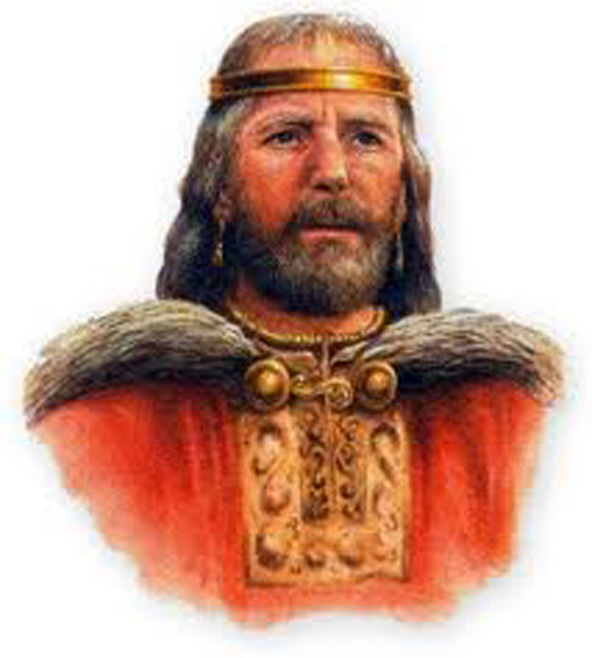 Brian BoruDublin was the Viking world’s largest city and traded from Iceland to Constantinople. The first genuine ruler of all Ireland - High King, Brian Boru - was rebelled against by Dublin Vikings and the Leinster Irish. With the aid of Vikings, Brian crushed his foes, and then was himself slain, in an epic battle at Clontarf in 1014.
Brian BoruDublin was the Viking world’s largest city and traded from Iceland to Constantinople. The first genuine ruler of all Ireland - High King, Brian Boru - was rebelled against by Dublin Vikings and the Leinster Irish. With the aid of Vikings, Brian crushed his foes, and then was himself slain, in an epic battle at Clontarf in 1014.
1014 – 1170:
The Vikings adopted Christianity and founded Christ Church Cathedral. In 1169, the deposed Irish King MacMurrough sought help from south-west Wales Normans who, under their leader Richard FitzGilbert de Clare (Strongbow), seized Dublin.
1171 – 1399:
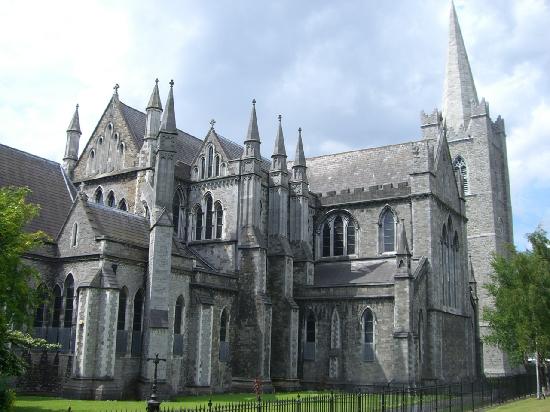 St Patrick’s CathedralIn 1171 Henry II landed with a great army, and made Dublin the capital of the Normans' Irish territory and the heart of the Norman and English colony. Christ Church was rebuilt in the Gothic style and work began on St Patrick’s Cathedral. In 1317 Scottish King Robert the Bruce and his brother Edward failed to take the city, but much destruction ensued. In1348 the city was gripped by the Black Death.
St Patrick’s CathedralIn 1171 Henry II landed with a great army, and made Dublin the capital of the Normans' Irish territory and the heart of the Norman and English colony. Christ Church was rebuilt in the Gothic style and work began on St Patrick’s Cathedral. In 1317 Scottish King Robert the Bruce and his brother Edward failed to take the city, but much destruction ensued. In1348 the city was gripped by the Black Death.
1399 – 1603:
English royal control of Ireland shrank during the 14th and 15th Centuries to coastal towns and an area round Dublin known as the Pale. From 1485-1603 the city played a crucial role when Tudor monarchs undertook a reconquest. In 1603 The Earl of Tyrone submitted and, for the first time, the Crown won control of the entire island.
1603 – 1660:
English monarchs decided Ireland should become Protestant. Christ Church and St Patrick’s were taken over and restored. English Civil War broke out in 1642 and many citizens joined the Gaelic Irish rebellion which had begun the year before. Eventually the forces of Parliament prevailed, and defeated royalists and the Irish besieged Dublin at Rathmines in 1649. Oliver Cromwell landed thirteen days later to begin the relentless subjugation of the country
1660 – 1691:
A remarkable period of recovery began and, between 1610-1683, the population rose from 26,000 to 58,000. Instability returned when James II, chased from England, arrived in Ireland via France in 1689. He was given an enthusiastic reception in Dublin but, after defeat by William of Orange at the Boyne in 1690, returned to France.
1691 – 1798:
A long peace followed William III’s victory, and Dublin became the British Empire's second largest city. By the middle of the 18th Century, the population was close to 130,000. A magnificent new parliament house (now the Bank of Ireland) was built in 1728 and a splendid gateway and façade for Trinity College completed in 1759 – making College Green the social hub of Dublin.
1798 – 1900:
Rebellion by the United Irishmen in1798. The authorities kept the insurrection out of Dublin but the revolt convinced Westminster to close the Dublin Parliament, and the 1801 Act of Union saw Ireland ruled from London. The aristocracy slowly deserted and, while it continued to grow, the city endured severe economic difficulties. Destitute victims of the Great Famine poured into Dublin from 1845-1850.
1900 – 1923:
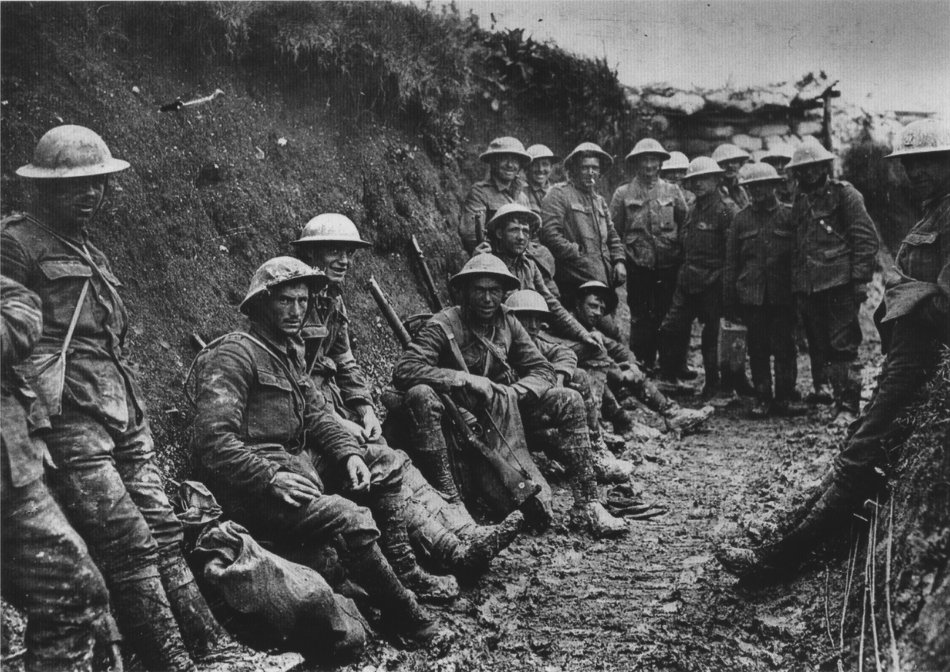 Royal Irish Rifles ration party Somme July 1916At the outbreak of WWI, the Irish Republican Brotherhood and the Irish Citizen Army prepared rebellion. The insurrection began on Easter Monday 1916 and was eventually put down, leaving much of the city centre around the General Post Office reduced to rubble. During the War of Independence, beginning in 1919, much guerrilla fighting took place in the streets, and in May 1921 the Irish Republican Army burned the Custom House. The 1921 Anglo-Irish Treaty made Dublin the capital of the Irish Free State. Disagreement over the terms of the Treaty resulted in civil war which began when Free State troops bombarded the Four Courts and buildings in O’Connell Street. The anti-Treaty IRA called a truce in the spring of 1923.
Royal Irish Rifles ration party Somme July 1916At the outbreak of WWI, the Irish Republican Brotherhood and the Irish Citizen Army prepared rebellion. The insurrection began on Easter Monday 1916 and was eventually put down, leaving much of the city centre around the General Post Office reduced to rubble. During the War of Independence, beginning in 1919, much guerrilla fighting took place in the streets, and in May 1921 the Irish Republican Army burned the Custom House. The 1921 Anglo-Irish Treaty made Dublin the capital of the Irish Free State. Disagreement over the terms of the Treaty resulted in civil war which began when Free State troops bombarded the Four Courts and buildings in O’Connell Street. The anti-Treaty IRA called a truce in the spring of 1923.
1923 – 1965:
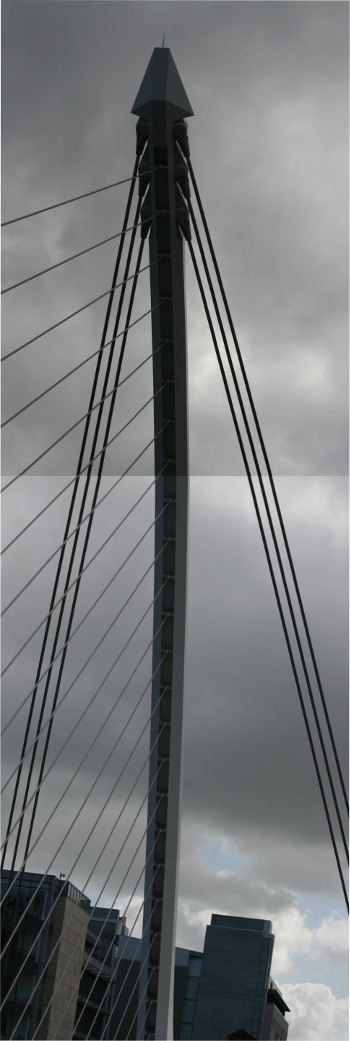 Samuel Becket BridgeDublin remained an elegant but somewhat impoverished city - the capital of a state which, in stages, severed its last links with the British Empire in the 1930s and 1940s and became a republic in 1949. Ireland's 1st Taoiseach (or Prime Minister) Eamon de Valera kept the state - renamed Éire in 1937 - out of WW2. Incidentally, Ireland's first leader, or President of the Executive Council, was WT Cosgrave (1922-32).
Samuel Becket BridgeDublin remained an elegant but somewhat impoverished city - the capital of a state which, in stages, severed its last links with the British Empire in the 1930s and 1940s and became a republic in 1949. Ireland's 1st Taoiseach (or Prime Minister) Eamon de Valera kept the state - renamed Éire in 1937 - out of WW2. Incidentally, Ireland's first leader, or President of the Executive Council, was WT Cosgrave (1922-32).
1965 – 1991:
A long era of peace, with trade agreements with Britain in 1965 and the joining of the Common Market in 1973 heralding spectacular – if uneven – city growth. In 1963, four months before his assassination, President Kennedy visited Ireland. In 1979 Pope John Paul ll - the first reigning Pope to visit Ireland - celebrated mass in front of one million people at Phoenix Park. In 1985 the Irish and British governments signed the Anglo-Irish Agreement giving the Republic of Ireland a consultative role in the NI government. In 1988 Dublin celebrated its Millennium and became European Capital of Culture in 1991.
1990s-present:
From the 1990s, the Celtic Tiger economy boomed and many ex-pats – or Irish Diaspora – returned home. House prices vied with those in London, and international music success, from Ireland’s 7th Eurovision Song Contest win (and the birth of Riverdance) to the global domination of rock band U2, further cemented Ireland's new culture of cool. In 1990 Mary Robinson became the first female President of Ireland and was succeeded in1997 by President, Belfast-born Mary McAleese. The feel-good factor spread into sport; back in 1987, cyclist Stephen Roche had won the Tour De France, Ireland beat Italy in the 1994 US World Cup Finals and runner Sonia O'Sullivan won World Championship gold in1995 and Olympic silver in 2000. In 2002 the Euro replaced the Punt as Ireland's currency.
Update:
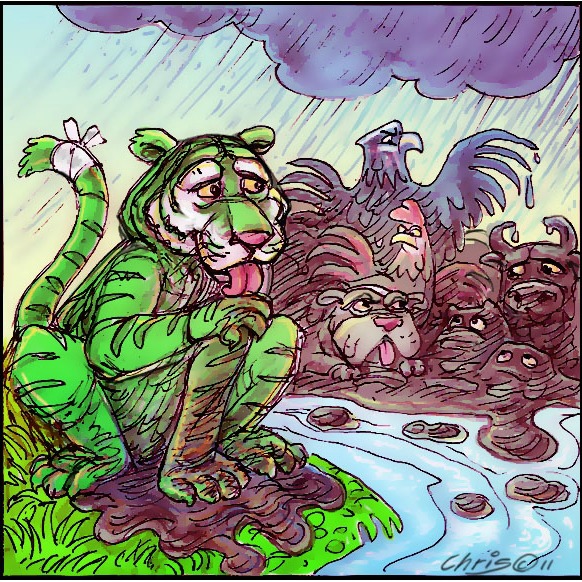 'Celtic Tiger' by Chris JohnstonHowever, like all good things, the Celtic Tiger economy collapsed in 2007 when it went into recession. Many commentators fail to distinguish between the period of real growth in the export-oriented technology and pharmaceutical sectors which created the "Celtic Tiger", and the bubble period of property-price inflation that yielded high levels of transaction based tax revenue and triggered unsustainable levels of current budget expenditure.
'Celtic Tiger' by Chris JohnstonHowever, like all good things, the Celtic Tiger economy collapsed in 2007 when it went into recession. Many commentators fail to distinguish between the period of real growth in the export-oriented technology and pharmaceutical sectors which created the "Celtic Tiger", and the bubble period of property-price inflation that yielded high levels of transaction based tax revenue and triggered unsustainable levels of current budget expenditure.
The economy underwent a dramatic reversal from 2008 with GDP contracting by 14% and unemployment levels rising to 14% by 2011.
In the 1995–2006 Celtic Tiger period of growth, development capital was raised in the interbank market, typically on a three-month basis, but with repayment not expected until two or three years later. Inadequate and/or lax supervision of the Irish banking system had allowed excessive borrowing by the Irish Banks on the corporate and international money markets. Much of the capital invested in Irish banks was from abroad with 80% from the UK, 13% from the US, 5% from off-shore funding and only 2% of the total Irish bank funding came from the eurozone in 2008.
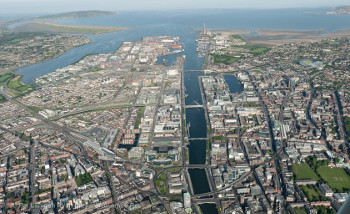 dublin city quays looking eastThe freezing-up of the world's interbank market during the financial crisis of 2007–2008 caused two problems for Irish Banks. Firstly, with no new money available to borrow, withdrawal of deposits caused a liquidity problem. In other words, there was no cash available to honour withdrawal requests. A liquidity problem on its own is usually manageable through Central Bank funding. However, the second problem was solvency and this was much more serious. The lack of new money meant no new loans which meant no new property deals. No new property purchases both exposed fragile cash-flows of developers and highlighted the stratospheric valuations. With the value of most of their assets (loans) declining in line with the property market, the liabilities (deposits) of the six Irish domestic banks were now considerably greater than their assets. Insolvency loomed and Irish Banks would need a major cash injection (recapitalisation) to stay open.
dublin city quays looking eastThe freezing-up of the world's interbank market during the financial crisis of 2007–2008 caused two problems for Irish Banks. Firstly, with no new money available to borrow, withdrawal of deposits caused a liquidity problem. In other words, there was no cash available to honour withdrawal requests. A liquidity problem on its own is usually manageable through Central Bank funding. However, the second problem was solvency and this was much more serious. The lack of new money meant no new loans which meant no new property deals. No new property purchases both exposed fragile cash-flows of developers and highlighted the stratospheric valuations. With the value of most of their assets (loans) declining in line with the property market, the liabilities (deposits) of the six Irish domestic banks were now considerably greater than their assets. Insolvency loomed and Irish Banks would need a major cash injection (recapitalisation) to stay open.
 james larkinGovernment interventions started with a guarantee in late September 2008 that covered liabilities existing from 30 September 2008 or at any time thereafter up to and including 29 September 2010. This guarantee was in respect of all retail and corporate deposits (to the extent not covered by existing deposit protection schemes in the State or any other jurisdiction), interbank deposits, senior unsecured debt; asset covered securities, and dated subordinated debt. On October 20, 2008, the Governing Council of the European Central Bank released their recommendations on government guarantees for bank debt which included the aim of "addressing the funding problems of liquidity-constrained solvent banks". Recapitalisation was carried out at Ireland's two largest banks, Allied Irish Bank (AIB) and Bank of Ireland (BoI), with bailouts of €3.5 billion confirmed for each bank on 11 February 2009.
james larkinGovernment interventions started with a guarantee in late September 2008 that covered liabilities existing from 30 September 2008 or at any time thereafter up to and including 29 September 2010. This guarantee was in respect of all retail and corporate deposits (to the extent not covered by existing deposit protection schemes in the State or any other jurisdiction), interbank deposits, senior unsecured debt; asset covered securities, and dated subordinated debt. On October 20, 2008, the Governing Council of the European Central Bank released their recommendations on government guarantees for bank debt which included the aim of "addressing the funding problems of liquidity-constrained solvent banks". Recapitalisation was carried out at Ireland's two largest banks, Allied Irish Bank (AIB) and Bank of Ireland (BoI), with bailouts of €3.5 billion confirmed for each bank on 11 February 2009.
October 2010 -
Irish sovereign bond yields were above 7%, making further market borrowing unrealistic. In November 2010 the government had to seek a €67.5 billion "bailout" from the EU, other European countries (via the European Financial Stability Facility fund and bilateral loans) and the IMF as part of an €85 billion 'programme.
And so started a four year period of the most austere Irish budgets the country has ever seen.
2011 -
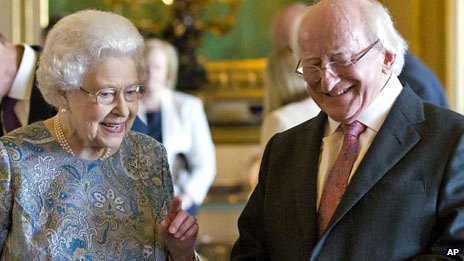 President Michael D Higgins and Queen Elizabeth IIMichael Daniel Higgins became the ninth and current President of Ireland, in office since 11 November 2011.
President Michael D Higgins and Queen Elizabeth IIMichael Daniel Higgins became the ninth and current President of Ireland, in office since 11 November 2011.
In 2013,
after a number of severe austerity budgets imposed on the country by the EU/IMF, Ireland gradually started to come out of recession.
2014 –
GDP growth is estimated at 4.7%
2015 –
GDP is forecast to be above 3%
But there is still a huge debt overhang on the current government.
Next week we look at where Ireland is now, its prospects, and some views on 2015.
History section courtesy of Dr. Jonathan Bardon, OBE, up to 20002. Additional information provided by DPNlive.com.
You can Tweet, Like us on Facebook, Share, Google+, Pinit, print and email from the top of this article.
Copyright © 2015, DPNLIVE – All Rights Reserved.











